Greek and Cretan Easter customs
Religious customs are alive and Christmas, Easter and the Assumption of The Virgin (15th August) are considered to be the greatest of religious feasts

Kaló Páscha Kaló Pásxa Happy Easter

At least 95 percent of all Greeks claim membership in the Greek Orthodox church, part of the Eastern Orthodox church. Until 1054, the Eastern Orthodox and Roman Catholic churches were one body. Theological, political, and cultural differences split the church in two, and those differences were never completely reconciled. Despite the power religion holds over everyday life, most younger Greeks are not devout churchgoers. Aside from the special Easter celebrations, services are attended mainly by old women and young children. And the Greeks often defy their church's teachings by clinging to beautiful old symbols, rituals and customs of pagan origine. Many Easter traditions originated long before the beginning of the Christian era.
Religious customs are alive and Christmas, Easter and the Assumption of The Virgin (15th August) are considered to be the greatest of religious feasts, of which Easter by far is the most important. To members of the Eastern Orthodox Church Christmas ranks second to Easter in the roster of important holidays.
| Nativity of the Theotokos | 8 September |
| Exaltation of the Holy Cross | 14 September |
| Presentation of the Theotokos in the Temple | 21 November |
| Christmas (Nativity of Jesus Christ) | 25 December |
| Epiphany (Baptism of Christ) | 6 January |
| Presentation of Christ in the Temple | 2 February |
| Annunciation (Evangelismos) | 25 March |
| EASTER (Pascha) | Date varies from year to year |
| Ascension | 40 Days after Easter |
| Pentecost | 50 Days after Easter |
| Transfiguration of Christ | 6 August |
| Dormition of the Theotokos (Kimissis) | 15 August |
*) The determination of the date of Easter is governed by a computation based on the vernal equinox (the point at which the ecliptic intersects the celestial equator, the sun having a northerly motion) and the phase of the moon. According to the ruling of the First Ecumenical Synod in 325, Easter Sunday should fall on the Sunday which follows the first full moon after the vernal equinox. If the full moon happens to fall on a Sunday, Easter is observed the following Sunday. The day taken to be the invariable date of the vernal equinox is 21 March.
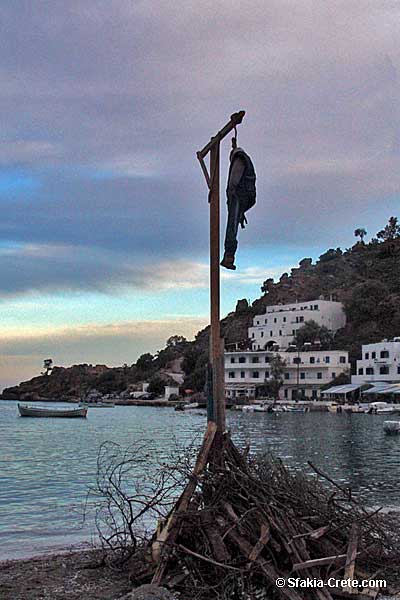
Photo by Valerie Athanasiou - Hanging of Judas, Loutro
The Greek Orthodox Church does not always celebrate Easter on the same date as the Catholic and Protestant countries. The reason is that the Orthodox Church uses the Julian calendar when calculating Easter. This is case even in the churches that otherwise use the Gregorian calendar. When the Greek Orthodox Church in 1923 decided to change to the Gregorian calendar (or rather: a Revised Julian Calendar), they chose to use the astronomical full moon as seen along the meridian of Jerusalem as the basis for calculating Easter, rather than to use the "official" full moon.
For a method of calculating Greek Easter yourself, click here! (very intrigueing puzzle!)
Upcoming Greek Orthodox Easter Sunday Dates
( * = same as Catholic and Protestant Easter Sunday)
| 2015: April 12 | 2022: April 24 | 2029: April 8 |
| 2016: May 1 | 2023: April 16 | 2030: April 28 |
| 2017: April 16 * | 2024: May 5 | 2031: April 13 * |
| 2018: April 8 | 2025: April 20 * | 2032: May 2 |
| 2019: April 28 | 2026: April 12 | 2033: April 24 |
| 2020: April 19 | 2027: May 2 | 2034: April 9* |
| 2021: May 2 | 2028: April 16 * | 2035: April 29 |
DISCLAIMER: These dates are provided as is. No warranties are made as to their correctness.
Want more dates? Click here
Upcoming Catholic and Protestant Easter Sunday Dates
( * = same as Greek Orthodox Easter Sunday)
| 2015: April 5 | 2022: April 17 | 2029: April 1 |
| 2016: March 27 | 2023: April 9 | 2030: April 21 |
| 2017: April 16 * | 2024: March 31 | 2031: April 13 * |
| 2018: April 1 | 2025: April 20 * | 2032: March 28 |
| 2019: April 21 | 2026: April 5 | 2033: April 17 |
| 2020: April 12 | 2027: March 28 | 2034: April 9* |
| 2021: April 4 | 2028: April 16 * | 2035: March 25 |
DISCLAIMER: These dates are provided as is. No warranties are made as to their correctness.
Want more dates? Click here

Many Easter traditions originated long before the beginning of the Christian era. Like Christmas, which is related to pre-Christian winter festivals, Easter is connected in many ways with pagan rituals that accompanied the arrival of spring. It is possible that the name "Easter" stemmed from that of Eostre, an Anglo-Saxon goddess of springtime. Easter is also associated with the Jewish festival of Passover, or Pesach. The term "paschal", meaning "of Easter", is derived from the name of the Jewish festival, as are the names of Easter in some foreign languages. In Greek, Easter is called Pascha, meaning passover: It is the eternal Passover from death to life and from earth to heaven.
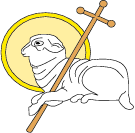
One of the most common Christian symbols, especially associated with Easter, is the lamb. It is often depicted with a banner that bears a cross, and it is known as the Agnus Dei, meaning "Lamb of God" in Latin.
The origin of the symbol is related directly to the Jewish Passover. In ancient times the Jews sacrificed a lamb in the course of the festival. The early Christians, most of whom were Hebrews, associated the sacrifice of the lamb with Christ's sacrifice on the cross. They connected the joyous Passover festival, which commemmorates the liberation of the Hebrews from their years of bondage in Egypt, with the liberation from death represented by the Resurrection.
The popularity of lamb as an Easter food is undoubtedly related to its importance as a symbol. During the middle ages roast lamb became the traditional main course of the Pope's Easter dinner, and it is still customarily served on Easter Sunday in many European countries.
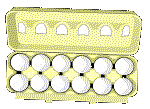
The Easter Egg is associated with beliefs of particularly ancient origin. The egg was an important symbol in the mythologies of many early civilizations, including those of India and Egypt. It was commonly believed that the universe developed from a great egg and that the halves of its shell corresponded to Heaven and earth. The egg was also connected with the springtime fertility rituals of many pre-Christian and Indo-European peoples, like the old Cretans, and both the Egyptians and the Persians made a practice of coloring eggs in the spring.

Greeks mainly color eggs red (scarlet) to signify the blood of Christ. They use hard-boiled eggs (painted red on Holy Thursday) which are baked into twisted sweet-bread loaves or distributed on Easter Sunday; people rap their eggs against their friends' eggs and the owner of the last uncracked egg is considered lucky.
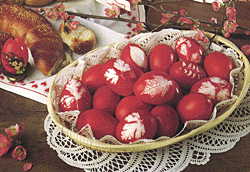
Greeks mainly color eggs red to signify the blood of Christ
RED EASTER EGGS
(Kokkina pasxalina avga)
One of the nicest Greek customs is the use of red eggs for the Easter celebration. It is unthinkable to set an Easter table without them, for they add to the celebration and happy atmosphere.
INGREDIENTS
Uncooked Eggs
Water
3/4 cup Vinegar
Red food dye or coloring
Vegetable oil
A few cotton balls
METHOD
Carefully wash and dry each egg. Set a large pot of water to boil. Add a red
dye or food coloring and 3/4 cup of vinegar to the water, and boil for
a few minutes. Slowly lower the eggs into the pot, and when the water comes
to a boil, lower the heat. Let eggs simmer for 15 min., then remove them
carefully from the pot. If you plan to cook more eggs, add an additional
2 tbs. vinegar to the water. Wipe cooked eggs with an oil-soaked cotton
ball, then wipe each egg with a clean dry cloth. Place on a platter. Serve
cold.
You can find more info about Greek red Easter eggs on our forum.
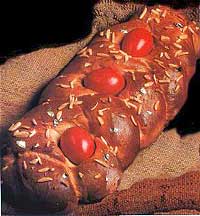
Colored eggs are used to decorate the Sweet Easter Bread Tsoureki
TSOUREKI
(Greek Easter Bread)
This braided bread recipe has its origins in the Byzantine Era. You don't have to be a theologian to comprehend the correlation between the Easter season and bread making as nearly any yeast-activated bread will rise again when diligently prepared.
INGREDIENTS
2-7 gram Packets Active Dry Yeast
2 cups Warm Milk
9 to 10 cups All-purpose Flour
1 1/2 cups Granulated Sugar
2 tsp. Makhlepi (Optional; essence drawn from the seeds of
Mediterranean wild cherries)
8 Tbs. Butter; Melted and Cooled
6 Eggs; 1 Lightly Beaten
1 tsp. Salt
1 Tbs. Grated Orange Rind (Zest)
1 Tbs. Grated Lemon Rind (Zest)
2 Hard-Cooked Red-Dyed Eggs (Optional)
2 Tbs. Black Cumin Seeds
PREPARATION
In a large bowl, dissolve yeast in warmed milk. Stir in 1
cup flour and 1/2 cup sugar, cover bowl with plastic wrap
and set aside for 1-hour. Steep makhlepi (if utilizing)
in 1/2 cup simmering water for about 5-minutes. Strain
mixture
and discard seeds. Set remaining liquid aside to cool.
Stir 1/2 cup water or makhlepi-scented liquid into the yeast mixture. Add butter and 5 eggs and thoroughly combine. Sift in 8 cups of flour, salt and remaining sugar into bread mixture. Add salt, orange and lemon zest, and mix thoroughly with a large wooden spoon. Turn out dough onto a floured surface. Knead, adding more flour if necessary, until smooth, approximately 10-minutes. Form the dough into a ball and place in a lightly greased bowl. Cover the dough with a clean dish towel and set aside to raise for about 2-hours.
Return dough to the floured surface. Divide the dough into 6-equal parts and roll into ropes about 15-inches long. For each loaf, loosely braid 3 ropes, turn under ends and press 1 dyed egg (optional) near one end of each braid. Set bread aside to rise again for at least 1-hour on a lightly greased cookie sheet.
Pre-heat oven to 350° F/ 180° C degrees. Brush bread with remaining beaten egg and sprinkle with black cumin seeds. Bake until golden, approximately 40 to 50-minutes. Store cooled bread in an airtight container or serve warm.
You can find more info about tsoureki on our forum.
In Christianity, the egg is a symbol of Resurrection, representing the emergence of Christ from His tomb to everlasting life. Over the centuries the symbolic associations of the egg have been more or less forgotten, and modern Easter eggs are valued primarily for their colorful appearance. Eggs of chocolate or other kinds of candy are favorites of the season.
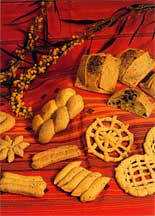
Koulouria and flaounes Easter cookies
At this time Greeks also eat a lot of koulouria and flaounes (Easter cakes).
More information about Greek Easter food is available at our Cretan food and drinks forum:
Cretan food and drinks forumGreek Easter wishes
and their meaning, and timing
| Happy Easter * | Kaló Páscha |
| Happy Easter / happy 'resurrection' * | Kalí Anástasi |
| Christ is risen * | Christós Anésti |
| Truly he is risen | Alithós Anésti |
| Have a good Lent | Kalí Sarrakostí |
| Easter Wishes | Chroniá Pollá |
* Pascha is the period before Easter Sunday, so you wish "Kalo Pascha" then, especially when the Holy Week starts. You wish "Kali Anastasi" when Easter Sunday is very close, especially after Holy Thursday and Friday. And of course you wish "Christos Anesti" on Easter Sunday when Christ is already risen.

The solemnity of Holy Week, the week before Easter, in the Greek Orthodox Church ends with the commencement of Easter celebrations, where it glorifies the Resurrection of Jesus Christ. In Greek religion, every Sunday is dedicated to the Resurrection of the Lord, but one hundred days also are dedicated to Easter, 50 before its actual preparation, and another 50 after it in commemorating the glorification of the Lord. Easter is therefore considered, the "Feast of Feasts".
The 50 days before Easter, known as a part of the period of Triodion, are the period for strengthening faith in the Lord, and starts with Clean Monday (Kathara Deftera), the first day of Megali Sarakosti, the season of Great Lent, the seventh Monday before Easter. It is also known as Pure Monday, Ash Monday, Monday of Lent or (in Cyprus only) Green Monday actually translated as such, is the first day of the Eastern Orthodox Christian Great Lent. It is a moveable feast that occurs in the beginning of 7th week before Easter Sunday.
The First Week of Great Lent - Clean Monday
An Anthem for Great
Lent and all of Life
Wash yourselves, and ye shall be clean;
put away the wicked ways from your souls before mine eyes;
cease to do evil; 17. learn to do well; diligently seek judgment,
relieve the oppressed, consider the fatherless, and plead for
the widow. 18. Come then, and let us reason together, saith
the Lord: and though your sins be as scarlet, I will make them
white as snow; and though they red like crimson, I will make
them white as wool. 19. If then ye be willing, and obedient
unto Me, ye shall eat the good of the land; 20. but if ye desire
not, nor will obey me, the sword shall devour you, for the
mouth of the Lord has spoken it.
(Is 1:1-20, First Monday of
Great Lent, the Sixth Hour)
The day is a national holiday in Greece and Cyprus, where it is celebrated with outdoors excursions, seafood consumption and other non-meat products, and the widespread custom of flying kites. Traditionally, it is considered to mark the beginning of the spring season. Clean Monday is one of the brightest holidays in Greece. For the Greek Orthodox Church it marks the beginning of the great fast.
Guidelines for Eastern Food to celebrate Clean Monday Day safe
The General Consumers Federation of Greece (INKA) gives advice for Eastern food so as for everybody to celebrate Clean Monday Day safe. According to INKA Eastern food prices are the same with last year. Consumers who are about to buy tarama (carp or cod roe) or sea food should be very careful as quality checks that have been made are not sufficient. INKA reminds consumers that the food preferences of Clean Monday Day and Eastern must be in accordance with certain rules. So those who are going for shopping should take into account the following:
• Lagana Bread: Be extra cautious because due to the big demand it may not have been baked appropriately and may cause stomach aches
• Taramas (carp or cod roe). A product full in colouring from preserved fish egg. Be careful with traces of bad smelling and sour flavour. Prefer cans. Avoid mash taramas which is rich in starch substances. Do not over do it with eating
• Halvas (Greek traditional sweet): It is made by tahini, sugar, cacao, dried fruits while there are different recipes for its cooking. Halvas is part of our tradition and it is rich in proteins, carbohydrates and unsaturated fats.
Oils: Avoid mixing different types of olives. Wash them very carefully.
• Toursi (pickles): It not recommended for sensitive stomachs. Prefer cans.
• Sea Food: Octopus: Fresh octopus have a nice, hard and juice skin, shining eyes and they smell good. Try to mild them when cooking.
• Kalamarakia (Greek Squid): Real kalamarakia have a white color with a brown tone do not have side blades or stains. Prefer frozen ones.
• Shelled Sea Food: Mussels, oysters, kidonia (local shelled food), sea urchin, conches etc. Be careful when eating. Shells should have been washed well first and they must smell like sea iodine.
• Mild Shelled Food: Shrimps, crabs, lobsters are the most sensitive category of sea foods. Prefer frozen ones. You can distinguish mild shelled food by their eyes, color and they are usually tight. If they become "greenish", smell or are a little loose do not buy.
• Alcohol: Prefer one type of drink- but if you want you can have a stronger drink. Although it sounds unusual it is better to change wine to beer or ouzo (Greek local drink) but not the opposite way round. And be careful: do not drink and drive.
From: ERT News 7 March, 2008
The 50 days which follow Easter are signified by the Pentecostarion, which are dedicated to the spiritual enjoyment of the participants in the deep belief that God is with all men in everyday life and thoughts.
Easter begins on the Saturday of Lazarus (the Saturday before Palm Sunday, 1 week before Easter Sunday) with children going from door to door singing the hymn of "Lazaros" and collecting money and eggs.
On the morning of Palm Sunday people gather in church and are given a cross made from palm fronds, which they put on their icon-stands at home and keep it for the whole of the coming year.
Every evening throughout Holy Week, people gather in church to follow
On Holy Tuesday, housewives make sweet rolls, the koulourakia, and the following day they do the housework, while in the evening they follow the blessing of Holy Oil that takes place in church.
Holy Thursday is the day for dyeing eggs. In the evening, after the reading of the 12 Gospel, the girls undertake the decoration of the bier of Christ (epitaphios) with garlands of white and purple flowers, so that in the morning of Good Friday it is ready to receive the image of the body of Christ when He is taken down from the cross.
Good Friday, or Megali Paraskevi, is a day of mourning. The drama of the death of Christ is followed with great devoutness. Sweet things are not eaten-for the love of Christ, who was given vinegar to drink. Soup made with sesame-paste, lettuce or lentils with vinegar is the food eaten on this day. It is considered a great sin to work with a hammer or nails or sew on Good Friday.
Vesper evening on Good Friday is followed by the procession of the bier (representing Christ's funeral). A band or choir playing or singing solemn music precedes the procession; they are followed by the cantors, the clergy, women bearing myrrh, the altar boys carrying the liturgical fans, scouts and guides, and the people of the region, who sing the hymns throughout the procession. All along its route, people scatter flowers and perfumes on the epitaphios (bier), holding lighted candles in their hands.
On Holy Saturday evening, the Resurrection mass (Anastási means 'resurrection', the Resurrection of Jesus) takes place. At midnight the ceremony of lighting of candles is the most significant moment of the year. People, carefully, take home their lighted candles with the holy light of the Resurrection. Before entering their houses they make a cross with the smoke of the candle on top of the door, they light the oil candle before their icon-stand, and try to keep this light burning throughout the year.
The Midnight service is without a doubt the most important day on the calendar. At midnight all the lights are extinguished in the church and the priest comes from behind the doors on the altar carrying a candle. He walks to someone in the front row and lights their candle and these people who receive the light of the resurrection, the light is a symbol of the resurrection, pass the light from candle to candle and the light fills the church. Everybody leaves the church just before midnight, singing a song the words of which mean, Jesus Christ has risen from the dead. Through death conquering death. At midnight at the moment of the resurrection all the families have gone to church together, all standing sort of huddled in these little insular units and everybody kisses everybody and say, 'Christos anesti, Christos anesti, Christ has risen, indeed He has risen. And it's a very touching moment. In the moment of conquering death, it has a certain meaning to kiss your grandparents at that point, who you know you'll be burying soon. And to be kissing the children who are coming up, who will be replacing you in the next generation. And there's a feeling of the weight of centuries. People have been saying these prayers unchanged for hundreds and hundreds and hundreds of years.
In Crete it's a custom to carry this candle back home, taking care the flame is not extinguished. At the house 3 crosses are made with the flame above the entrance door: the black soot 'paints' the crosses, in order to bless the house and its inhabitants by the light of Christ's resurrection.
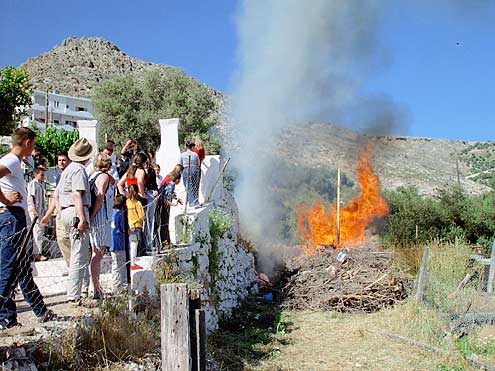
Greek Easter bonfire in Sfakia; burning the Judas doll
Photo report of Easter in Sfakia May 2002It is customary for young people to light a huge bonfire in the churchyard to burn Judas, the apostle who betrayed Jesus. On Easter Sunday, after the Easter Service at 12 midday, traditional entertainment with the participation of all people is organised. Fasting has ended (The Great Fast (Lent)--beginning on a Monday 7 weeks before Easter) and huge dishes of lamb are enjoyed. The Greeks have many traditions on this day, however the most important is gathering the family together and roasting a lamb, rotisserie-style, ('Arni Pashalino tis Souvlas': Easter Lamb on the Spit) in their front yards. The whole country does this, every family, hence, everywhere you find a very thick smoke and smell.
Modern Greek Easter nowadays is less traditional in urban areas, specially in and around Athens and Thessaloniki. People take a holiday break, causing massive traffic jams and no single domestic flight's seat is empty.
Some personal accounts of Greek Easter:
The
run-up to Cretan Easter in Loutro is a time for the children
of the village. For the whole week beforehand they are busily
occupied in making an over-life-sized and quite fearsome effigy
of Judas. They collect the wood for an enormous bonfire, and
burn Judas at the stake on the Saturday night before Easter
Sunday. Everyone, locals and visitors alike, gathers round
the bonfire as Judas is consumed to the accompaniment of roaring
cheers, exploding firecrackers, and the occasional burst of
gunfire.
I do not know if this is the custom everywhere: I've only
experienced Cretan Easter in Loutro.
Anyway, two years ago I was in Loutro at Easter, staying for
the first time in a new studio attached to the Porto Loutro
hotel. The lamppost on which Judas was hung was right outside
the studio window, so I decided to watch the excitements from
my own personal ringside view.
Wow! There was Judas, going up in flames about six feet from
my face. I quickly shut the window (which became so hot I
was afraid the whole of my little building would be consumed
in the conflagratio), and continued to watch in awe as the
fire roared and the cinders flew.
It was soon over; Judas dwindled into a pile of ashes to loud
cheers from the children, and the bonfire slowly died.
Next day, Easter Sunday, is feast day. Stavros always cooks
several lambs and goats on spits behind the hotel, Alison
and her friends make a variety of wonderful salads, and everyone
who is around is welcome to sit down and partake. The wine
and beer flow liberally. Plans for walks that afternoon somehow
don't seem so pressing any more...
Thanks to Julie F., UK
My
most memorable Easter impression goes back as far as about
12 or 14 years ago. Apart from watching people putting up
this beautiful altar-like structure covered with flowers all
over in front of the church I remember endless church singing
done by the priest and members of the community during Holy
Week. People would only occasionally drop in for half an hour
and then vanish again and reappear later on.
Easter night proper is something special in a village like
Olimbos in the north of Kárpathos island. The worst for me
were the huge firecrackers thrown into church (during service)
among the crowds listening to the priest's chants. An incredible
noise while the priest goes on, untouched by the events, as
it seems (- a big show). And they explode right between your
legs (on the floor though, thank God), or on your shoes, etc.
So don't stand next to any entrance should you ever have the
occasion ... Imagine that? That's the way it has to be, anyway.
After midnight, the famous soup made of innards is served,
and feasting starts ... (Streams of blood are visible, and
drying up, in some building carcass on the outskirts of the
village a couple of days before Easter - dozens of little
lambs are slaughtered, you can't watch such a thing.)
The following day everybody is given a coloured egg baked
into a small pie and thus integrated into the old Easter customs
once again. The music in Olimbos is another very special thing.
They've even got bagpipes (and they know how to play them),
not only their special (little bells on the bow) lyres. American
whiskeys are the musician's first choice, by the way, not
the Greek strong stuff. Well, every family has several relatives
in the States, or Australia, or in some other English-speaking)
country, you see.
Thanks to Martin from Munich, Germany
Geia sas, Just back after 4½ months in Crete and the first thing I read is all this about celebrating Easter. It feels like I want to go at once. My wife and I have visited Crete during Easter many times and we like your traditions very, very much. We would not take the chance of missing it for all the olive oil in the world. It is very special if you compare it to the Swedish traditions. Personally I like the week (The holy week) before Easter as much as the days during Easter. People entering the churches and the monasteries, the ringing of the bells and so on. We always celebrate the Easter together with "our" Cretan families and that is fantastic. Thinking of Easterday in Kastellos close to Kournas, together with friends eating lamb, koukouretsi (spelling might be wrong), drinking their own wine, dancing and singing, fighting to be best with the red eggs and son on, old and young together, makes me warm in my heart. So, the tickets are booked for a flight back on the 21 of April. Greetings Lars and Sofia.
Thanks to Lars and Sofia, Sweden







